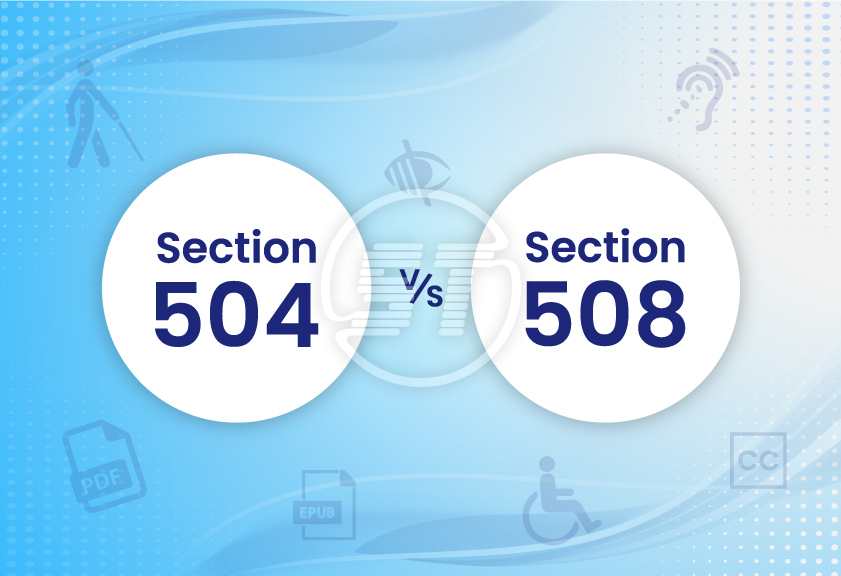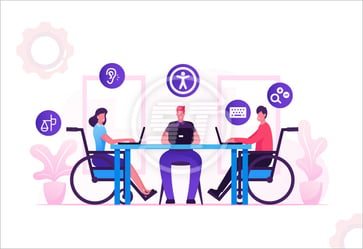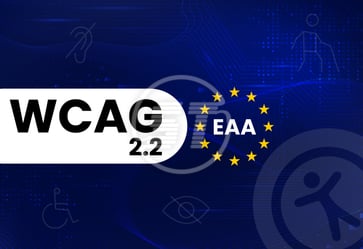In an increasingly digital world, ensuring a website is accessible to everyone isn’t just good practice – it’s the law. But for many website owners, understanding which law applies can be confusing, especially when it comes to Section 504, and Section 508 of the Rehabilitation Act of 1973. Both aim to ensure access for individuals with disabilities, but they apply in different contexts and come with unique compliance responsibilities.
So, it doesn’t matter, whether it is a public sector organization or a private sector, it is important for everyone to understand these regulations and their demands.
Let’s read more about it.
Section 504: Basic yet crucial information!
Section 504 prohibits discrimination against individuals with disabilities in programs and activities that receive federal financial assistance. This includes public schools, universities, healthcare institutions, and other federally funded organizations
In the context of digital accessibility, Section 504 means:
- Any digital platform (like a website, a portal, or mobile app) operated by a federally funded entity must be accessible to people with disabilities.
- The focus is on equal access rather than specific technical standards.
Example: A public university that receives federal funds must ensure its course registration site is usable by students with visual or motor impairments.
Read more about Section 504: Section 504 website accessibility compliance
Section 508 Rehabilitation Act: Overview!
Section 508 compliance is a more specific and technical regulation. It mandates that all federal agencies must make their electronic and information technology (EIT) – including websites – accessible to employees and members of the public with disabilities.
This section:
- Applies directly to federal government entities and vendors providing digital products or services to them.
- Requires compliance with the Web Content Accessibility Guidelines (WCAG) 2.0 Level AA, per the 2017 refresh.
Example: A federal agency must ensure its website, forms, and internal systems meet WCAG standards so both the public and employees with disabilities can access them.
Difference between these guidelines at a glance!
| Feature | Section 504 | Section 508 |
|---|---|---|
| Who it applies to | Any organization receiving federal funds | Federal government agencies and their contractors |
| Primary focus | Equal access, nondiscrimination | Technical accessibility standards for digital content. |
| Enforcement | Office for Civil Rights (OCR), DOJ | General Services Administration (GSA), DOJ |
| Accessibility standards | There is no specific standard, but WCAG is often referenced. | WCAG 2.0 Level AA is required. |
| Legal implications | Civil rights violation if non-compliant. | Procurement and legal penalties for non-compliance. |
It is crucial to learn the difference and apply both guidelines rightly; why?
- Even if it is a non-government agency, it may be affected by the consequences of non-conformance.
- University, hospital, or nonprofit with federal grants, Section 504 applies to them.
- Both laws are enforced under civil rights and disability discrimination laws, meaning legal risks are real.
- ADA lawsuits often cite these laws as guiding frameworks for accessibility expectations.
Best practices for compliance with Section 504 or Section 508!
Whether an organization works under Section 504 or Section 508, some important pointers to remember:
- Audit the website accessibility regularly
Accessibility is not a one-time fix - it should be an ongoing process. Websites change frequently with new content, design tweaks, and technology updates, which can inadvertently introduce accessibility barriers.
Use any of the available automated tools to identify basic yet important issues. Then follow up with manual audits by professionals and ensure that both public-facing and internal systems (like employee portals) are all tested and maintained.
- Adopt and align with WCAG guidelines
Although Section 504 doesn’t mandate WCAG, it is widely considered the gold standard. Section 508 explicitly references WCAG 2.0 Level AA – and aligning with WCAG 2.1 provides broader coverage, especially for mobile and cognitive accessibility.
Focus on the WCAG four key principles POUR and prioritize these elements:
- Text alternatives for non-text content
- Keyboard navigation
- Logical content structure using headings and ARIA landmarks
- Sufficient color contrast
- Responsive design that works across devices and screen readers.
- Include accessibility in procurement and vendor contracts
Third-party tools and platforms integrated into a website (like booking widgets, learning tools, PDFs, or video players) must also be accessible. If they aren’t, the organization is still responsible.
- Implement accessibility requirements in RFPs and vendor agreements.
- Ask for a Voluntary Product Accessibility Template (VPAT) from vendors to evaluate their compliance.
- Test third-party integrations independently before deployment.
- Implement accessible content creation workflows
Accessibility lives in the website’s code and content both. Text, images, videos, and documents must all be formatted with accessibility in mind.
- Provide alt text for images and descriptive captions for multimedia.
- Use clear, concise language and avoid jargon when possible.
- Ensure forms are properly labeled with associated instructions and error handling.
- Create accessible PDFs and Word documents using templates that follow accessibility best practices.
- Train teams on accessibility principles
Without team-wide awareness, efforts can stall or regress. Empowering the content creators, designers, and developers ensures ongoing compliance.
- Provide training on accessibility basics and disability inclusion.
- Writing accessible HTML, ARIA attributes, and semantic structure.
- Incorporate accessibility into onboarding and performance expectations.
- Offer multiple ways to get support or information
Some users may struggle to access the website’s important features or information. Providing alternatives ensures that no user has been excluded.
- Offer a contact method (phone, email, form) specifically for accessibility help.
- Include skip links, site maps, and alternative navigation options.
- Provide accessible feedback forms for users to report barriers.
- Maintain an accessibility policy and roadmap
Transparency builds trust and shows the organization’s commitment to digital inclusion. A policy also helps in case of legal scrutiny or public complaints.
- Create a publicly available accessibility statement with updated information.
- Develop an internal roadmap for accessibility improvements, with goals and timelines.
So, compliance is inclusion!
Understanding the nuances between Section 504 and Section 508 isn’t just about avoiding legal trouble – it’s about creating inclusive digital experiences for all users. Legally obligated or ethically motivated, accessibility should be built into the DNA of a website’s digital presence.
Accessibility compliance isn’t optional - it’s essential. Learn how Section 504 and Section 508 impact your website and how we can help you meet these standards with confidence. Our expertise lies in providing website accessibility remediation services that cater to a diverse array of needs. Reach out hello@skynettechnologies.com for more information.


